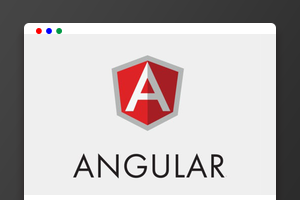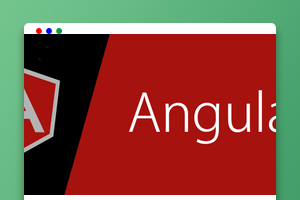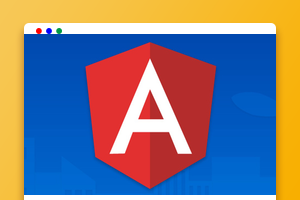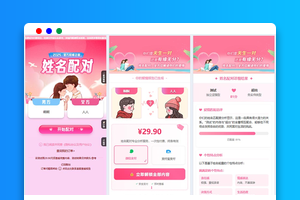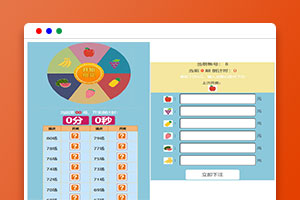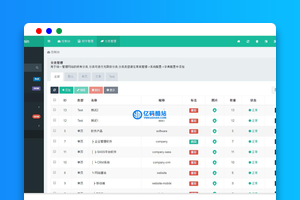<app-liftcycle [name]="name" (changeName)="changeName($event)"></app-liftcycle>
public name: string = "jack"; public changeName(value: string) { this.name = value; }
<div (click)="emit()">{{name}}</div>
import { Component, Input, EventEmitter, Output } from '@angular/core';
@Input() name: string;
@Output() changeName: EventEmitter<string> = new EventEmitter<string>();
public emit() {
this.changeName.emit("修改name属性");
}
【相关教程推荐:《angular教程》】
通过setter监听属性的变化
父组件同上,子组件:
private _name: string = "";
@Input()
public get name(): string {
return this._name;
}
public set name(value: string) {
this._name = value + "定义结构";
}
通过ngOnChanges钩子函数监听输入属性的变化
ngOnChanges在监听多个属性的时候,要比setter的方式简便一些。
@Input() name: string;
ngOnChanges(changes: SimpleChanges): void {
(({name}) => {
console.log(name.currentValue,name.previousValue);
})(changes);
}
父组件html中通过模板变量调用子组件的方法和属性。
模板变量获取了子组件的一个引用。 父组件:
<app-liftcycle #child></app-liftcycle> <button (click)="child.childFn()">按钮</button>
子组件:
public childFn() {
console.log("通过模板变量调用子组件中的方法");
}
父组件通过ViewChild获取子组件实例
<app-liftcycle [name]="name" (changeName)="changeName($event)" #child></app-liftcycle> <button (click)="childFn()">childFn</button>
@ViewChild("child") child: LiftcycleComponent;
public childFn(): void {
this.child.childFn();
}
通过service进行通信
service:
import { Subject } from 'rxjs';
import { Injectable } from '@angular/core';
@Injectable({
providedIn: 'root'
})
export class CommunService {
constructor() {}
public commun = new Subject<string>();
communSend() {
this.commun.next("send");
}
}
父组件:
constructor(private commun: CommunService) { }
public send(): void {
this.commun.communSend();
}
子组件:
constructor(private commun: CommunService) {
this.commun.commun.subscribe((value) => {console.log(value)});
}
父组件传递方法
父组件通过属性传递给子组件方法,子组件进行调用,一般不推荐,React采用这种通信方式。 可能是基于this的绑定错综复杂,所以angular不太推荐。React Hooks的出现也有一部分原因 是class类的this错综复杂。 父组件:
<app-liftcycle [send]="send.bind(this)"></app-liftcycle>
public name: string = "jack";
public send(): void {
console.log(this.name);
}
子组件:
<button (click)="childSend()">childSend</button>
@Input() send: Function;
public childSend() {
this.send();
}
更多编程相关知识,请访问:编程视频!!
以上就是Angular父子组件间怎么进行通信?父子传值的方式浅析的详细内容,更多请关注亿码酷站其它相关文章!
Angular父子组件间怎么进行通信?父子传值的方式浅析
—–文章转载自PHP中文网如有侵权请联系ymkuzhan@126.com删除
转载请注明来源:Angular父子组件间怎么进行通信?父子传值的方式浅析
本文永久链接地址:https://www.ymkuzhan.com/37830.html
本文永久链接地址:https://www.ymkuzhan.com/37830.html
下载声明:
本站资源如无特殊说明默认解压密码为www.ymkuzhan.com建议使用WinRAR解压; 本站资源来源于用户分享、互换、购买以及网络收集等渠道,本站不提供任何技术服务及有偿服务,资源仅提供给大家学习研究请勿作它用。 赞助本站仅为维持服务器日常运行并非购买程序及源码费用因此不提供任何技术支持,如果你喜欢该程序,请购买正版! 版权声明:
下载本站资源学习研究的默认同意本站【版权声明】若本站提供的资源侵犯到你的权益,请提交版权证明文件至邮箱ymkuzhan#126.com(将#替换为@)站长将会在三个工作日内为您删除。 免责声明:
您好,本站所有资源(包括但不限于:源码、素材、工具、字体、图像、模板等)均为用户分享、互换、购买以及网络收集而来,并未取得原始权利人授权,因此禁止一切商用行为,仅可用于个人研究学习使用。请务必于下载后24小时内彻底删除,一切因下载人使用所引起的法律相关责任,包括但不限于:侵权,索赔,法律责任,刑事责任等相关责任,全部由下载人/使用人,全部承担。以上说明,一经发布视为您已全部阅读,理解、同意以上内容,如对以上内容持有异议,请勿下载,谢谢配合!支持正版,人人有责,如不慎对您的合法权益构成侵犯,请联系我们对相应内容进行删除,谢谢!

 成为VIP
成为VIP
